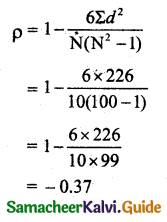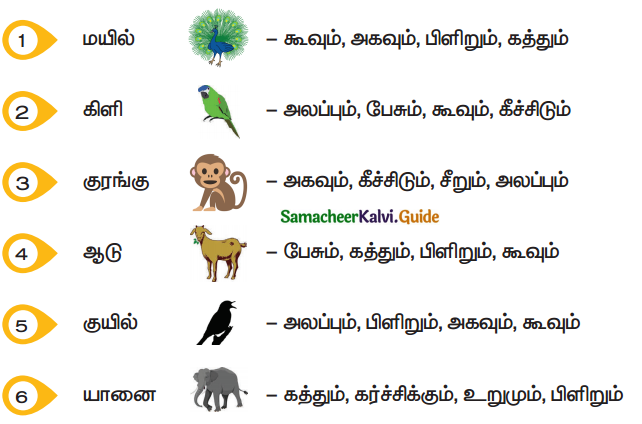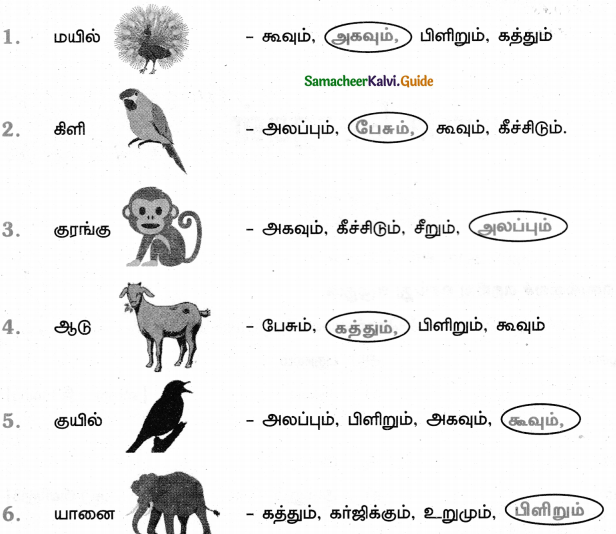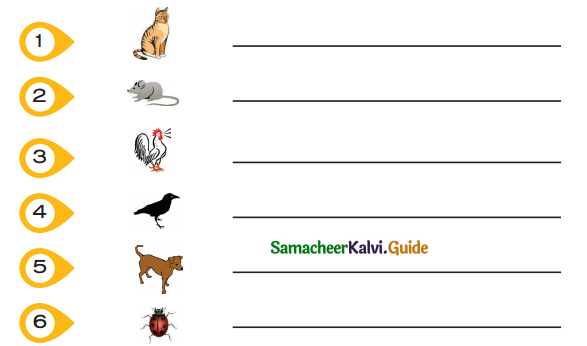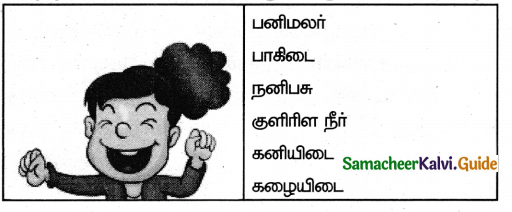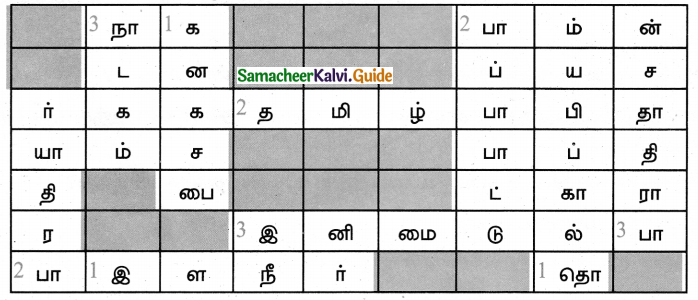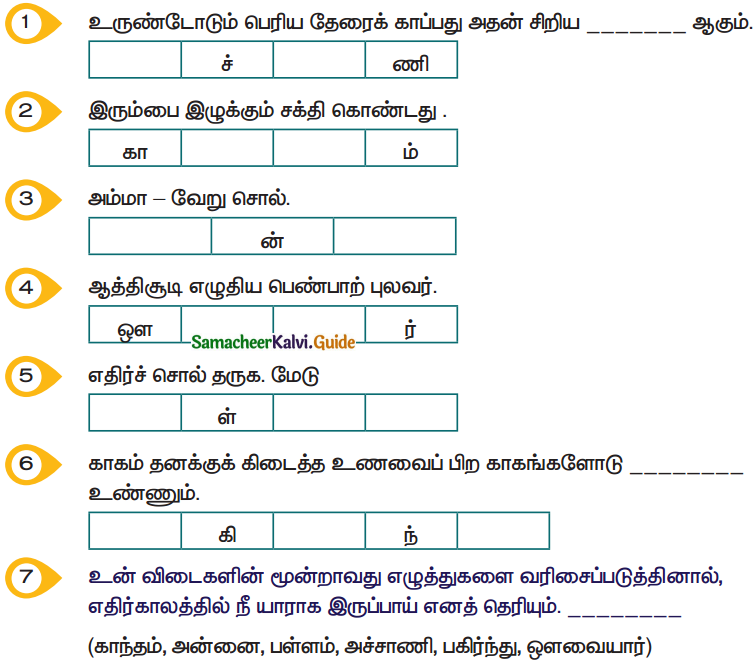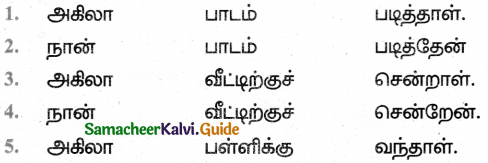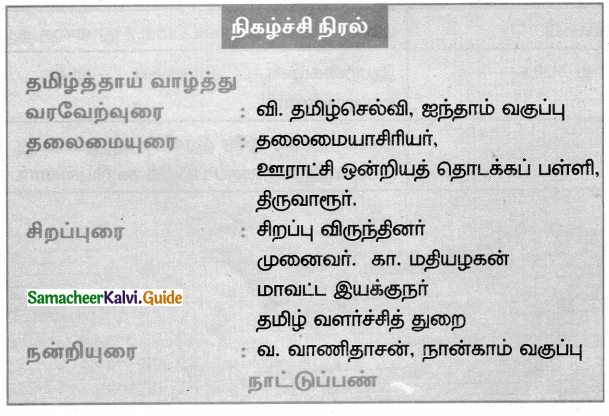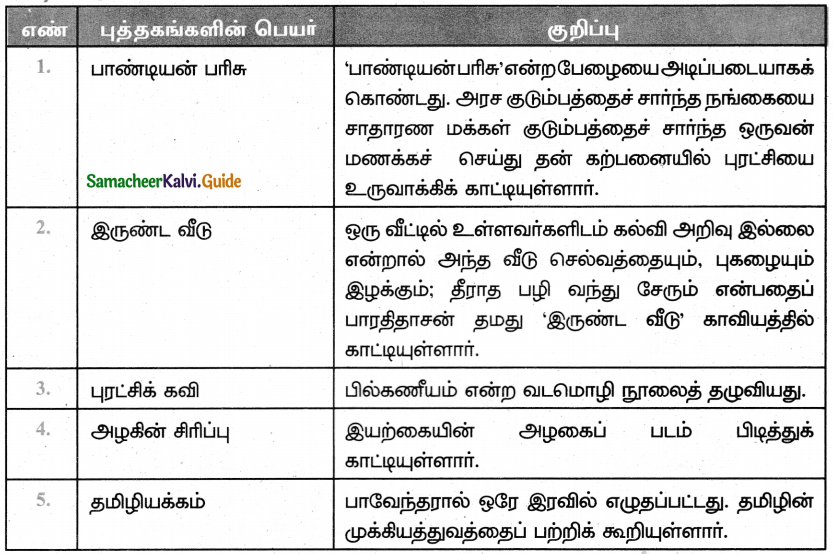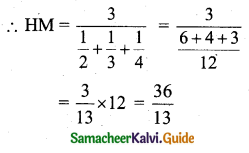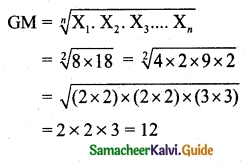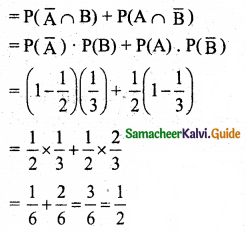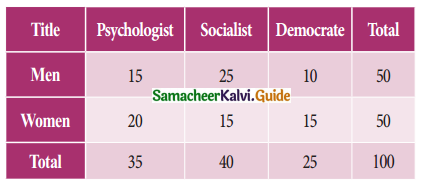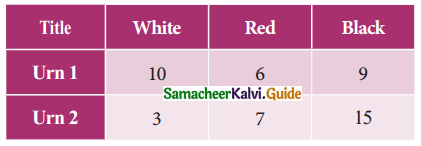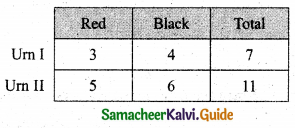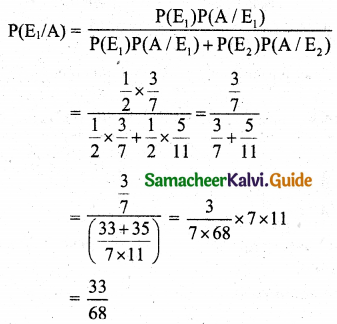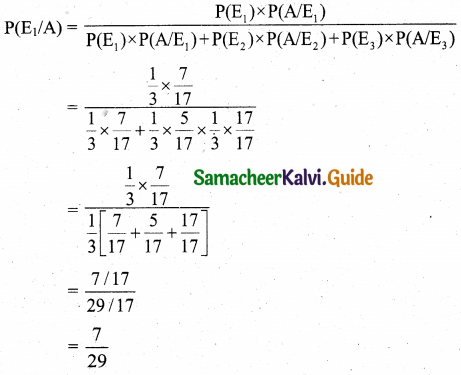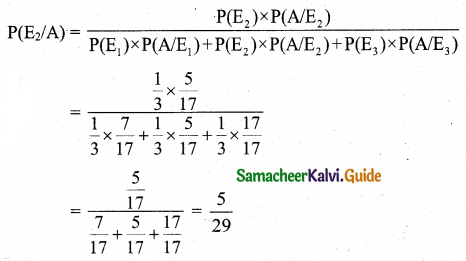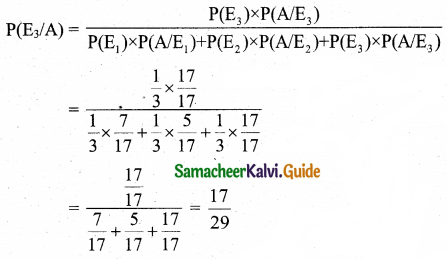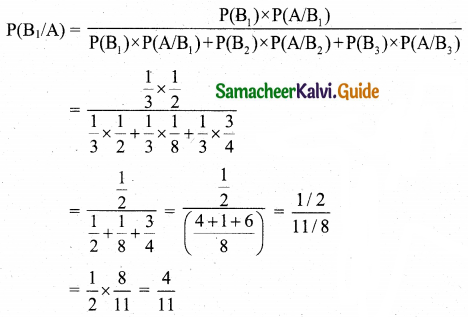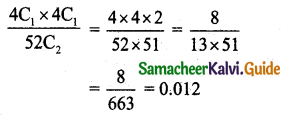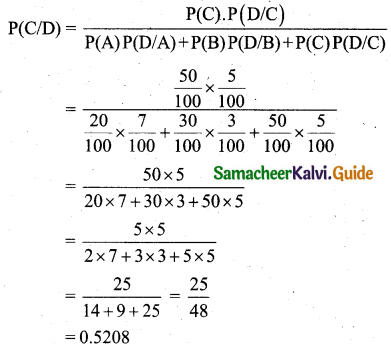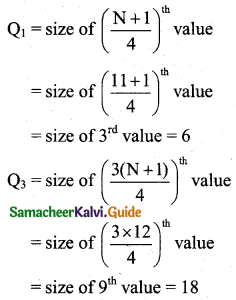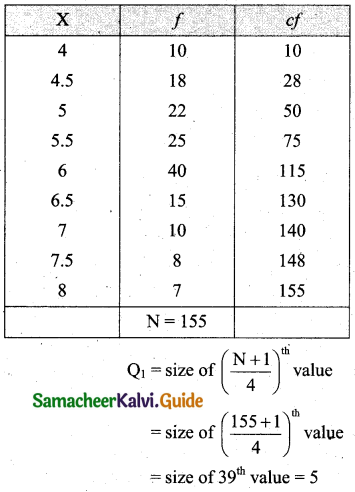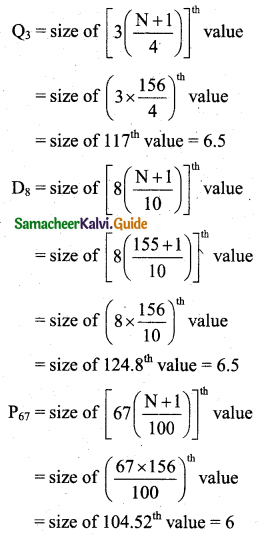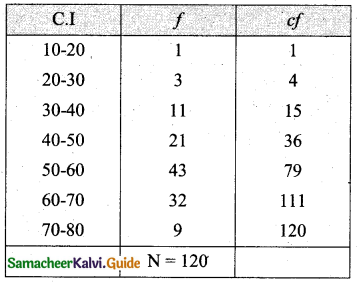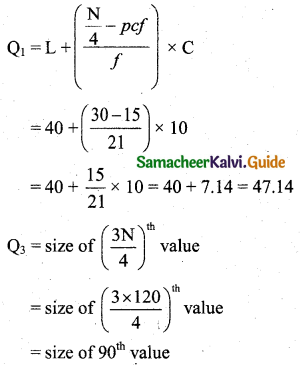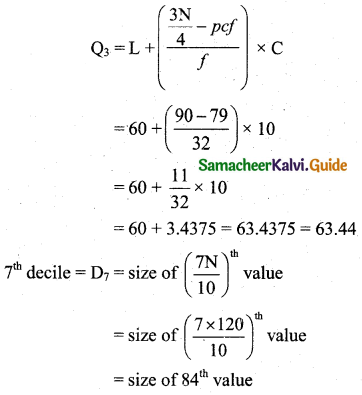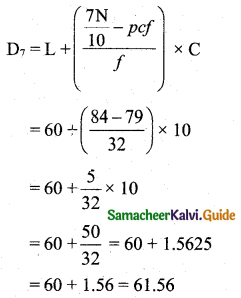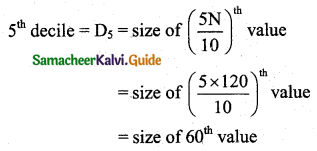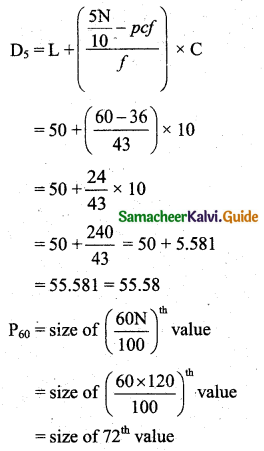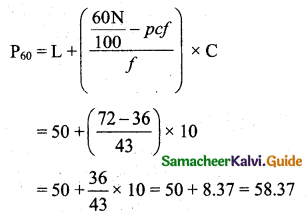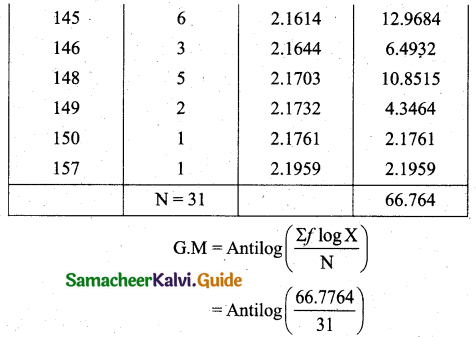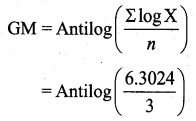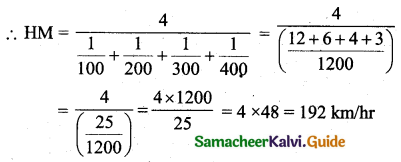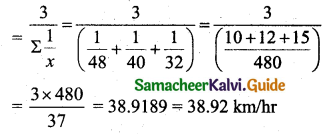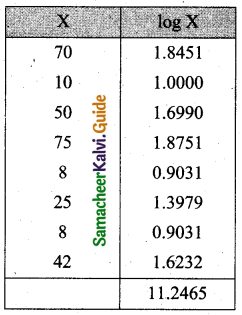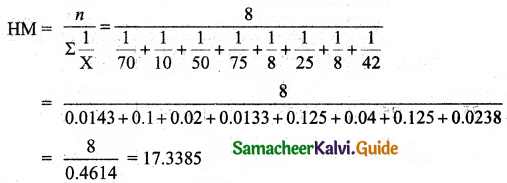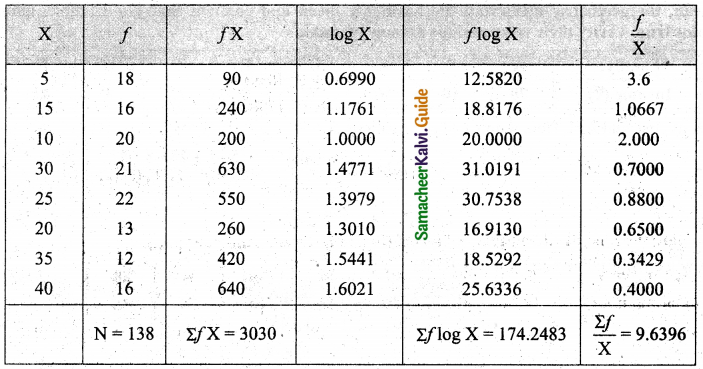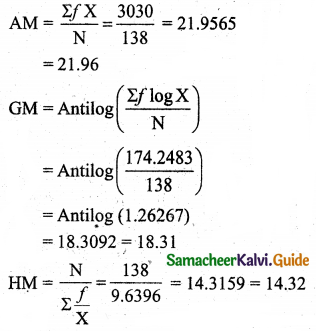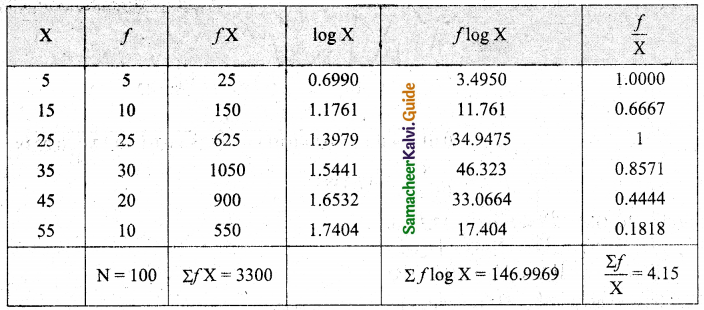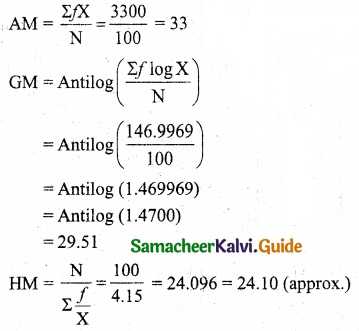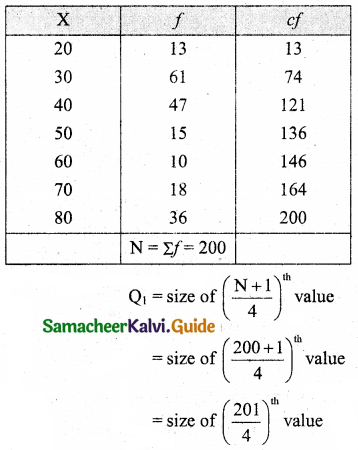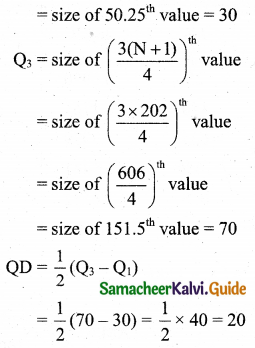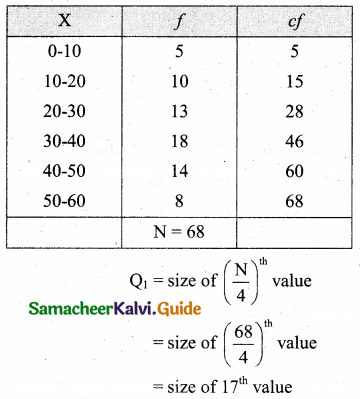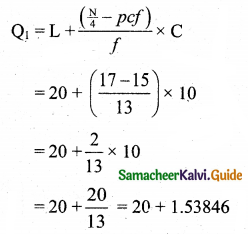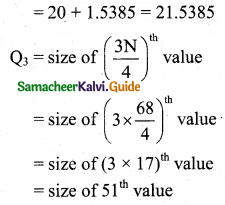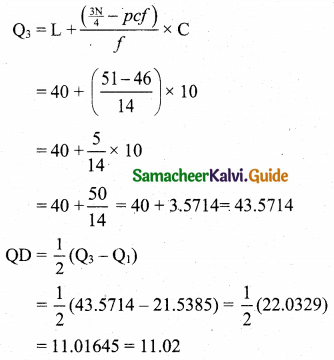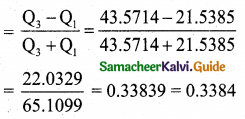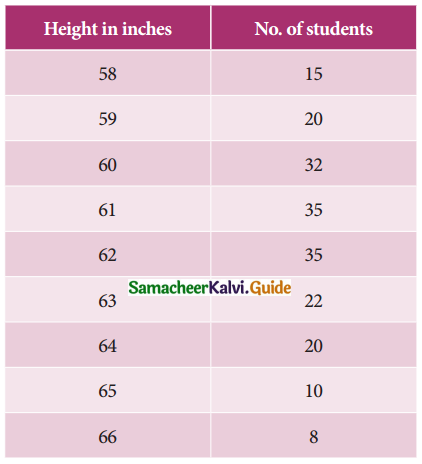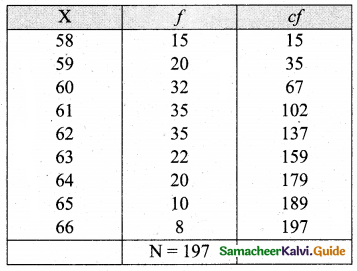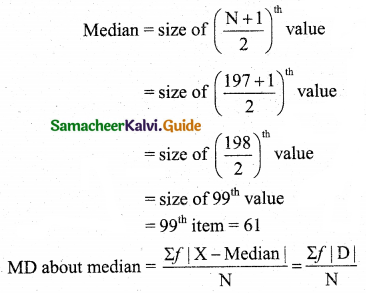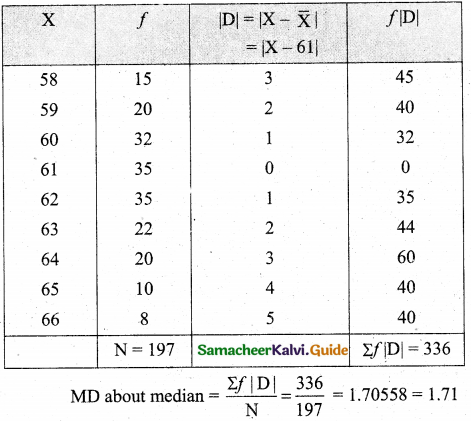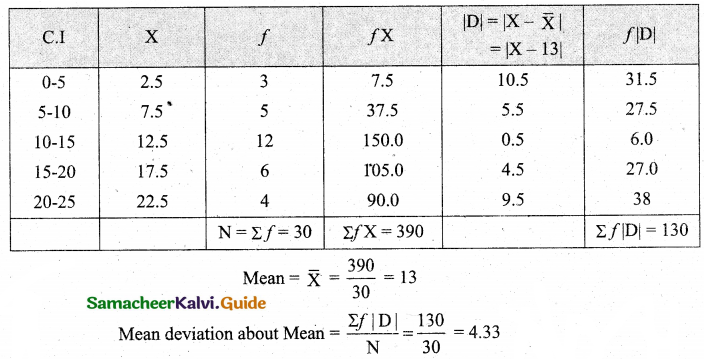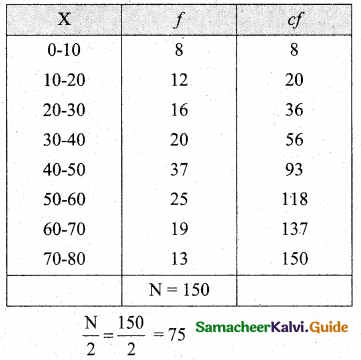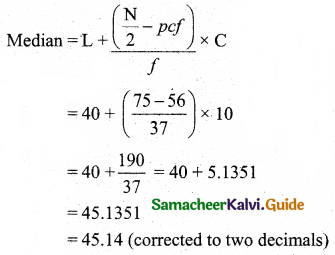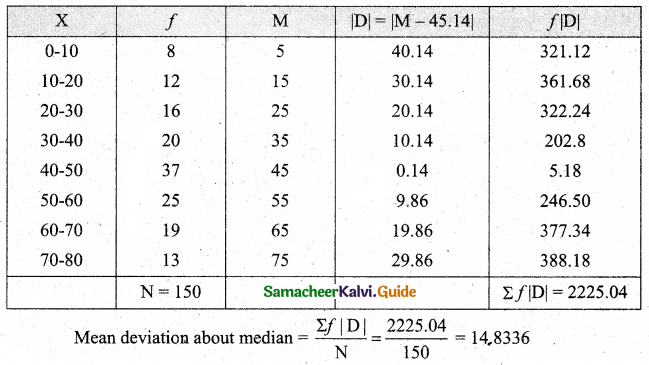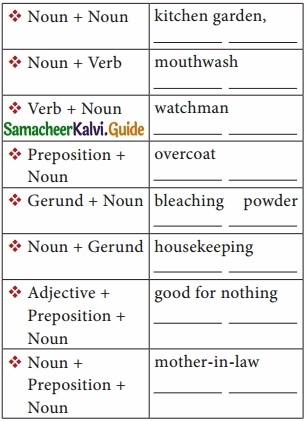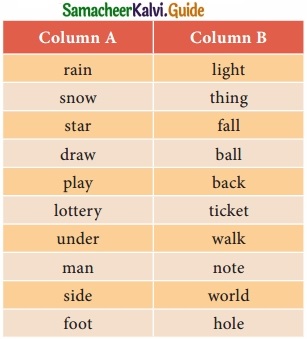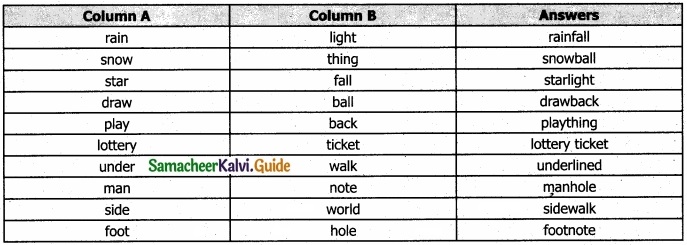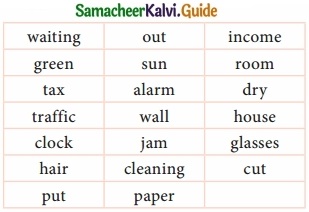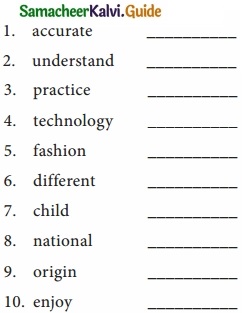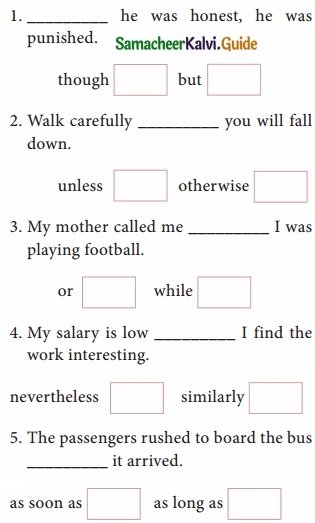Tamilnadu State Board New Syllabus Samcheer Kalvi 11th Business Maths Guide Pdf Chapter 9 Correlation and Regression Analysis Ex 9.1 Text Book Back Questions and Answers, Notes.
Tamilnadu Samacheer Kalvi 11th Business Maths Solutions Chapter 9 Correlation and Regression Analysis Ex 9.1
Samacheer Kalvi 11th Business Maths Correlation and Regression Analysis Ex 9.1 Text Book Back Questions and Answers
Question 1.
Calculate the correlation co-efficient for the following data:

Solution:
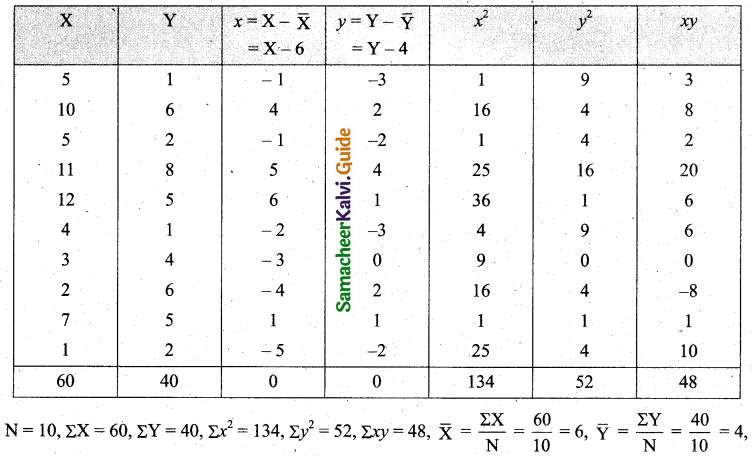
Coefficient of correlation
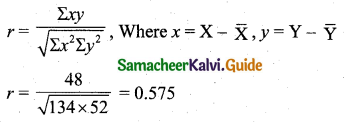
![]()
Question 2.
Find the coefficient of correlation for the following:

Solution:


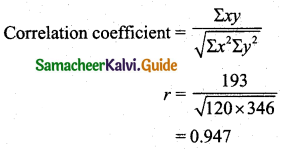
Question 3.
Calculate the coefficient of correlation for the ages of husbands and their respective wives:

Solution:
Without deviation:
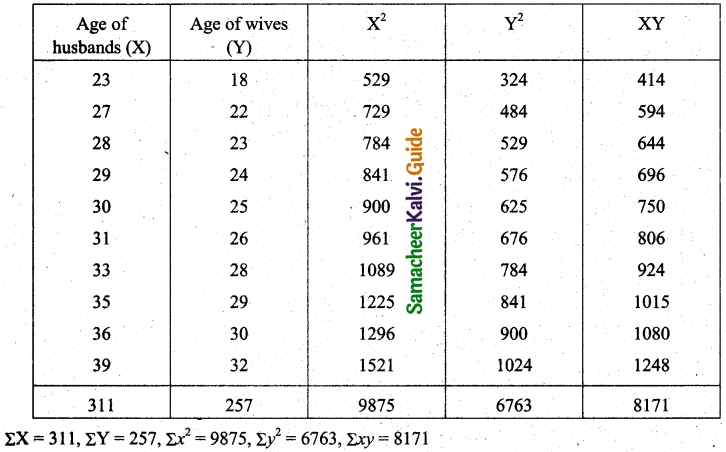
N = 10
Coefficient of correlation
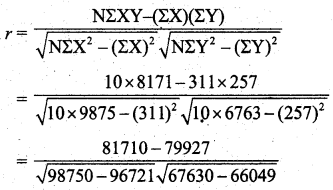
= \(\frac{1783}{45 \times 39.76}\)
= 0.9965
Note: We can do the above problem using deviations taken from arithmetic means of X and Y. i.e., using
r = \(\frac{\Sigma \mathrm{XY}}{\sqrt{\Sigma \mathrm{X}^{2} \Sigma \mathrm{Y}^{2}}}\)
![]()
Question 4.
Calculate the coefficient of correlation between X and Y series from the following data:
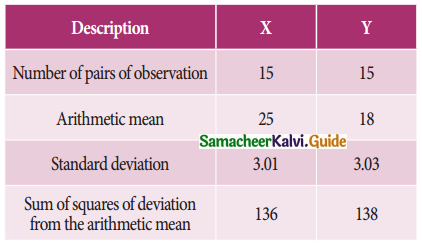
The summation of product deviations of X and Y series from their respective arithmetic means is 122.
Solution:
N = 15, \(\overline{\mathrm{X}}\) = 25, \(\overline{\mathrm{Y}}\) = 18, x = X – \(\overline{\mathrm{X}}\), y = Y – \(\overline{\mathrm{Y}}\), Σx2 = 136, Σy2 = 138, Σxy = 122
Correlation coefficient
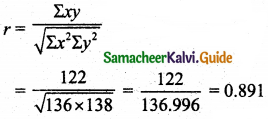
Question 5.
Calculate the correlation coefficient for the following data:

Solution:
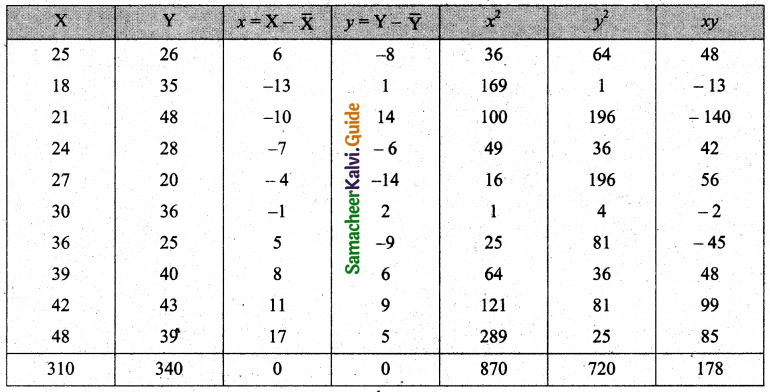
N = 10, ΣX = 310, ΣY = 340, Σx2 = 870, Σy2 = 720, Σxy = 178

Correlation coefficient
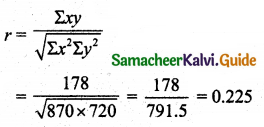
![]()
Question 6.
Find the coefficient of correlation for the following:

Solution:
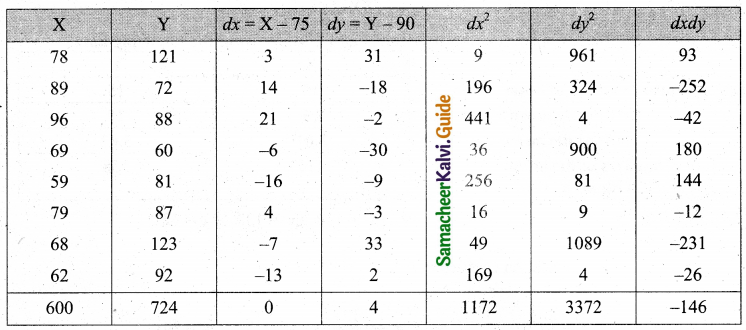
N = 8, ΣX = 600, ΣY = 724, Σdx2 = 1172, Σdy2 = 3372, Σdxdy = -146
Correlation coefficient
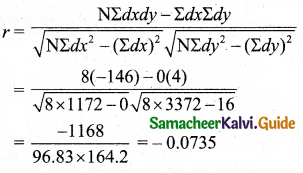
Question 7.
An examination of 11 applicants for an accountant post was taken by a finance company. The marks obtained by the applicants in the reasoning and aptitude tests are given below.
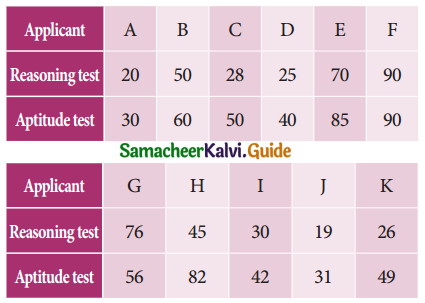
Calculate Spearman’s rank correlation coefficient from the data given above.
Solution:
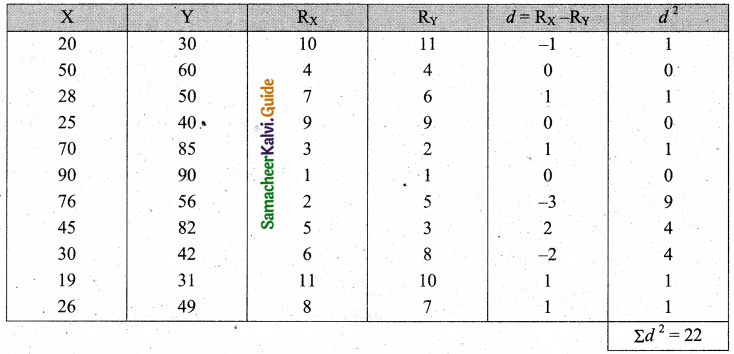
N = 11, Σd2 = 22
Rank correlation
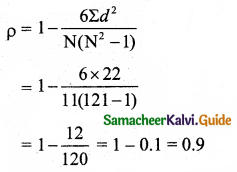
![]()
Question 8.
The following are the ranks obtained by 10 students in commerce and accountancy are given below:

To what extent is the knowledge of students in the two subjects related?
Solution:
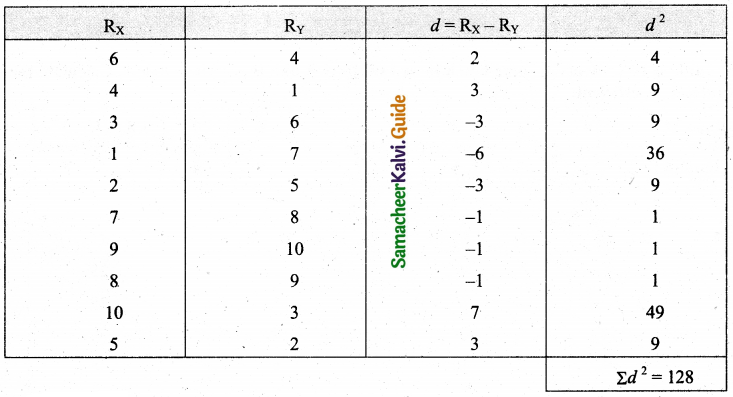
N = 11, Σd2 = 128
Rank correlation
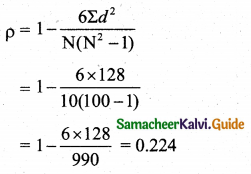
Question 9.
A random sample of recent repair jobs was selected and the estimated cost and actual cost were recorded.

Calculate the value of spearman’s correlation coefficient.
Solution:


N = 8, Σd2 = 8
Rank correlation
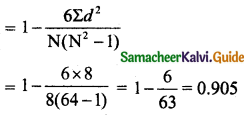
![]()
Question 10.
The rank of 10 students of the same batch in two subjects A and B are given below. Calculate the rank correlation coefficient.

Solution:
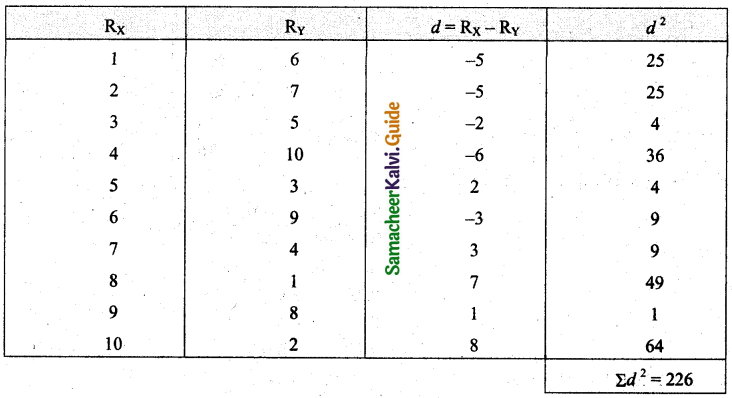
N = 10, Σd2 = 226
Rank correlation
